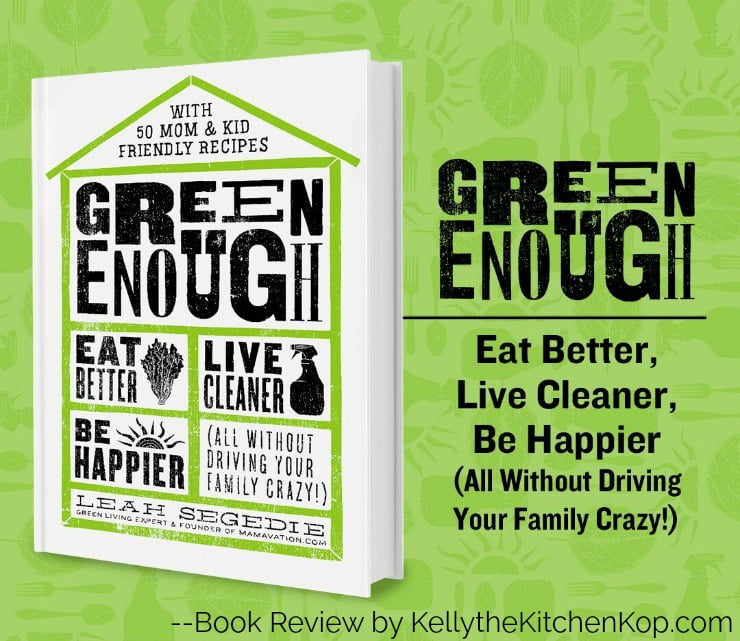
I thought had a pretty good handle on plastics. BUT… then I saw this plastic numbers chart and realized I'd had it all wrong!!!
“This home is green enough to be healthy and chill enough to be happy“, that's what the signed card said that came with Leah's book:
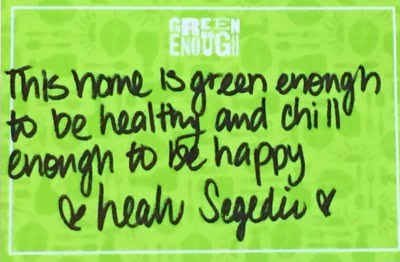
I probably fall a little more in the, “I want all the crap out of this house right NOW” category, but there's only so much one Mom can do, and Leah helps you know what the dangers are without making you coo-coo crazy trying to keep your family safe. Her book showed me all the ways I still need to grow and get better, but without any mom-guilt.
The kids were really wondering about me the other day after I read the section on the plastic numbers.
(It wasn't the first time they thought I'd lost it, and I doubt it'll be the last!) Years ago I wrote this post on BPA free water bottles and thought I had a pretty good handle on things. I threw out a bunch of plastics then, mostly water bottles, and replaced them with only the ones made of HDPE #2. BUT…
Then I saw this plastic numbers chart — apparently the #2 plastic is not bad for single use, but it shouldn't be reused!!!
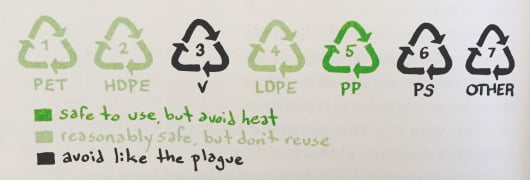
Here's what else I learned about the plastic numbers and each type of plastic:
#1: PET or PETE (polyethylene teraphthalate). Bottled water comes in this plastic, which is designed for single use so it’s not especially strong. As with all plastics, heat is a problem. When you leave a plastic bottle sitting in the sun or your hot car, you’re effectively helping all those chemicals leach into your water. Plus, bacteria can accumulate with repeated refills, so don’t reuse—recycle.
#2: HDPE (high-density polyethylene). Typically opaque with a lower risk of leaching, so many consider it safe. Best to avoid reusing; most curbside recycling programs will pick it up.
#3: V or PVC (vinyl). Used to make detergent bottles and some food wraps. Never cook with or burn this plastic. May contain phthalates, which are linked to numerous health issues, and DEHA, which can be carcinogenic with long-term exposure. Most curbside recycling programs do not accept PVC.
#4: LDPE (low-density polyethylene). It’s found in squeezable bottles, frozen food and bread bags, and some food wraps. Curbside recycling pro-grams typically do not accept it. Considered safer, but concern about endocrine-disrupting chemicals is mounting, particularly when it comes to use with fatty foods like cheese and ham.
#5: Polypropylene. Used to make yogurt containers and bottles for ketchup and syrup, this plastic is becoming more accepted by curbside recycle pro-grams. It’s safe to reuse if it’s in good condition and you avoid exposing it to heat.
#6: Polystyrene. Used to make meat trays and those squeaky egg cartons. It’s bad for the environment because it is notoriously difficult to recycle, and it’s bad for us because it leaches potentially toxic chemicals (espe-cially when heated). Most recycling programs won’t accept it.
#7: Other, Miscellaneous. All of the plastics that don’t fit into the other categories are placed in the 7 category. It ’s a mixed bag of plastics that includes polycarbonate, which con-tains the toxic bisphenol-A (BPA) and plant based alternatives. The best and the worste are here. Use caution.
You guessed it, all of those water bottles went straight to the trash and of course I updated that safe water bottles/5 Plastic Safety Tips post, too. As I was gathering the plastics that I had thought were on the “okay” list and hauling them to the trash, the kids were asking, “WHAT are you doing?!” I said, “I want grandkids someday ya know!” When Leah talked to her husband and boys about the plastic problem, she called it the “Save the swimmers campaign.”
Here's what I ordered as replacements: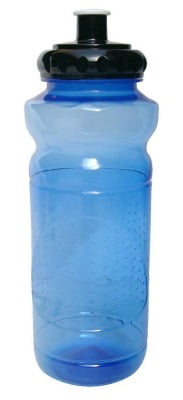
- Apparently the safest type, if you have to use plastic at all, is #5/polypropylene, so after searching online through all the different brands of water bottles trying to find what they were made of (many don't tell), I got these #5 water bottles. (It's mostly for our son to take to soccer practice.)
- By the way, that same day I decided I didn't know which type of plastic the pitchers in our cabinet were made of, so I ordered this one that is actually for mixing up homemade baby formula. (Turns out I didn't check the size very well, it was only 32 ounces, so I'll have to order another, but I thought I'd tell you about it in case you know someone who is understandably afraid of conventional baby formula and is making their own.)
- Also don't miss my recent post: My Favorite Non-Toxic Straws
You can get the book Green Enough here, but I learned about more than just plastics and about the plastic numbers!
(This is a pic of Leah and I at Shiftcon.)
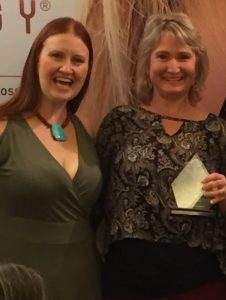 Here are a few short excerpts:
Here are a few short excerpts:
I didn't used to be a “green mom”. You know, those total killjoys you encounter at playgrounds, parties, and everywhere you want to just relax. (“Everything is toxic! Everything is giving us cancer! You can't do this because of that and you can't do that because of this!”) I hate to be told what to do, so I avoided green moms like the plague.
Today, I'm green enough, which means far from perfect, but light-years better than before.
We live in a toxic soup, and still we wonder why so many people are having trouble conceiving children, many others are dropping dead of cancer, and chronic disease is becoming so prevalent among young children that our offspring have been dubbed “Generation Rx”.
Leah dove deep into all the ingredients and terms and certification meanings and even the brands that make up the natural products and natural food companies, along with bad-better-best lists so you know what to buy. She also goes into best choices for food packaging, cookware, and storage containers. Then she digs into each type of food group. Next she explains the dangers room by room in the home and your options for better choices there. Lastly, she deals with all the natural care products one by one, with bad-better-best lists here too, and even some DIY recipes!
She covers a LOT of ground in this book.
Leah actually had me laughing out loud several times while reading, and she also doesn't shy away from a well-placed F-bomb here and there, just sayin'…
Only a couple things left me scratching my head, both were in the sidebars. One was written by pediatrician, Dr. Tanya. She recommends low-fat or skim milk for kids over 3. Huh?! Read here about healthy milk options and why I only recommend whole milk ever. (Hint: that's how it comes in nature, how could that be bad? Plus we need those healthy fats to absorb all of the other nutrients in our foods.) The other was in the comments by scientist Pete. He said, “What I know as a scientist has made a near-vegetarian of me.”
Leah said she sometimes limits red meat for fiscal reasons only and that I can get behind.
If you want to eat more meatless meals here and there to stretch the budget, that makes sense, since you can still get plenty of good animal fats, farm eggs, and other nutrients into your diet that way, but when someone limits meat because they can't find good quality, I always wonder if they've checked with their local farmers? Eating local meat and dairy from farmers you trust who know how to cultivate healthy soil and raise happy, pastured animals fed what God designed them to eat is the BEST way to be sure of what you're getting and to know that it's so GOOD for you! (It's good for the earth too.)
Do you cook with dry beans?
Later in the book she shares several recipes, and she's even inspired me try cooking with dry beans, something I've never done before. (Whenever I do cook with beans, I've always used these pre-soaked ones.) Besides the beans, I have quite a few pages turned down with recipes I want to try: Chipotle Black Bean Dip, Potatoes Vinaigrette, Grain Salad with Dried Fruit, and more.
I really enjoyed this, and it was a FUN book to read because of the unexpected belly laughs here and there. I know I'll flip back to refer to it often!
Here are more nuggets of wisdom from Leah:
Thanks for sharing your book with me Leah, and yes, for getting me straight on the plastic numbers chart! Get a copy of Green Enough here. 🙂
More you might like:
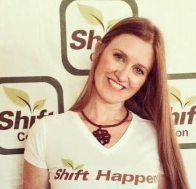 Excerpts reprinted from Green Enough by Leah Segedie. Copyright ©2018 by Leah Segedie. By permission of Rodale Books, a division of Penguin Random House LLC. Available wherever books are sold.
Excerpts reprinted from Green Enough by Leah Segedie. Copyright ©2018 by Leah Segedie. By permission of Rodale Books, a division of Penguin Random House LLC. Available wherever books are sold.
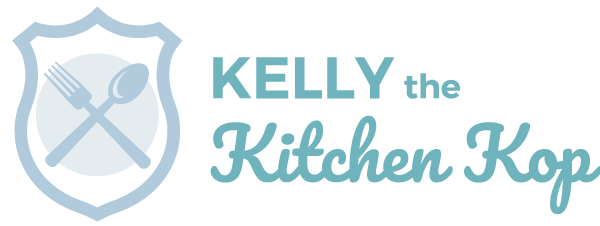
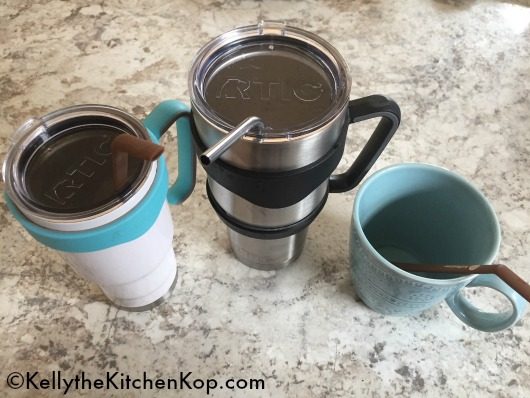
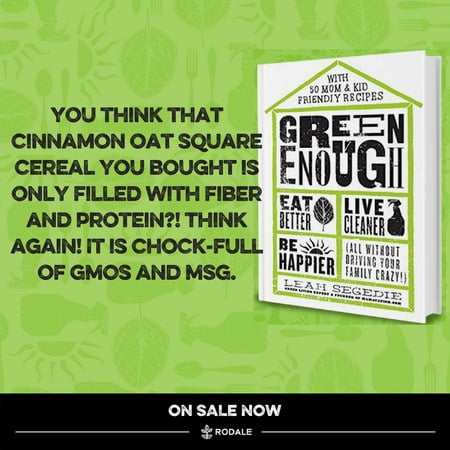
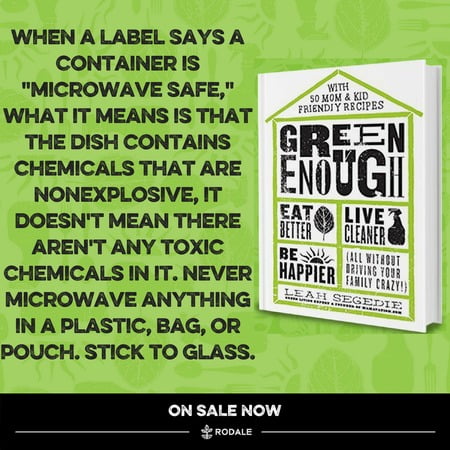
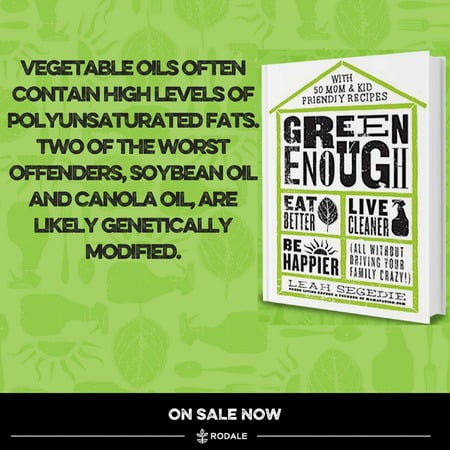
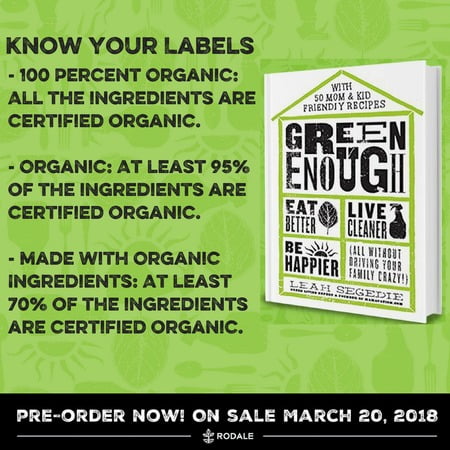
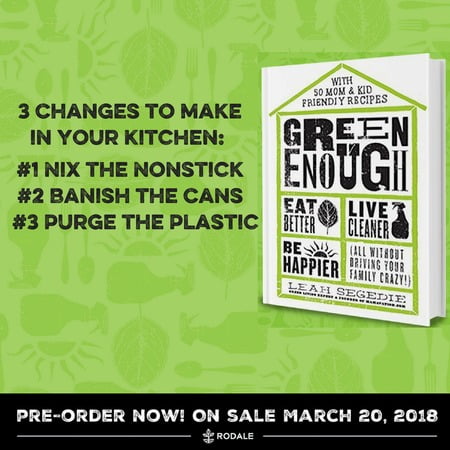
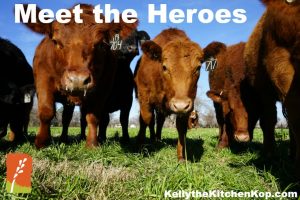
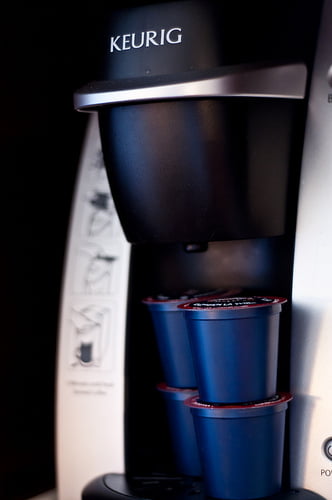
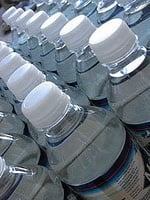

Leave a Reply